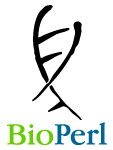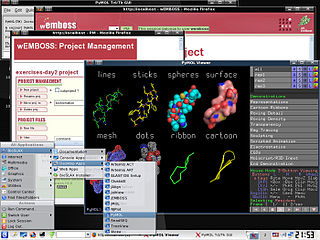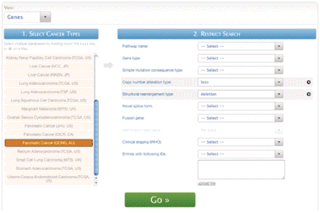Related Research Articles

BioPerl is a collection of Perl modules that facilitate the development of Perl scripts for bioinformatics applications. It has played an integral role in the Human Genome Project.
BioCreAtIvE consists in a community-wide effort for evaluating information extraction and text mining developments in the biological domain.
CellProfiler is free, open-source software designed to enable biologists without training in computer vision or programming to quantitatively measure phenotypes from thousands of images automatically. Advanced algorithms for image analysis are available as individual modules that can be placed in sequential order together to form a pipeline; the pipeline is then used to identify and measure biological objects and features in images, particularly those obtained through fluorescence microscopy.
A virtual appliance is a pre-configured virtual machine image, ready to run on a hypervisor; virtual appliances are a subset of the broader class of software appliances. Installation of a software appliance on a virtual machine and packaging that into an image creates a virtual appliance. Like software appliances, virtual appliances are intended to eliminate the installation, configuration and maintenance costs associated with running complex stacks of software.

The Chemistry Development Kit (CDK) is computer software, a library in the programming language Java, for chemoinformatics and bioinformatics. It is available for Windows, Linux, Unix, and macOS. It is free and open-source software distributed under the GNU Lesser General Public License (LGPL) 2.0.

The Bioclipse project is a Java-based, open-source, visual platform for chemo- and bioinformatics based on the Eclipse Rich Client Platform (RCP).

Microarray analysis techniques are used in interpreting the data generated from experiments on DNA, RNA, and protein microarrays, which allow researchers to investigate the expression state of a large number of genes – in many cases, an organism's entire genome – in a single experiment. Such experiments can generate very large amounts of data, allowing researchers to assess the overall state of a cell or organism. Data in such large quantities is difficult – if not impossible – to analyze without the help of computer programs.

Apache Taverna was an open source software tool for designing and executing workflows, initially created by the myGrid project under the name Taverna Workbench, then a project under the Apache incubator. Taverna allowed users to integrate many different software components, including WSDL SOAP or REST Web services, such as those provided by the National Center for Biotechnology Information, the European Bioinformatics Institute, the DNA Databank of Japan (DDBJ), SoapLab, BioMOBY and EMBOSS. The set of available services was not finite and users could import new service descriptions into the Taverna Workbench.
The European Molecular Biology network (EMBnet) is an international scientific network and interest group that aims to enhance bioinformatics services by bringing together bioinformatics expertises and capacities. On 2011 EMBnet has 37 nodes spread over 32 countries. The nodes include bioinformatics related university departments, research institutes and national service providers.
The National Centre for Text Mining (NaCTeM) is a publicly funded text mining (TM) centre. It was established to provide support, advice and information on TM technologies and to disseminate information within the larger TM community, while also providing services and tools in response to the requirements of the United Kingdom academic community.
Amazon Elastic Compute Cloud (EC2) is a part of Amazon.com's cloud-computing platform, Amazon Web Services (AWS), that allows users to rent virtual computers on which to run their own computer applications. EC2 encourages scalable deployment of applications by providing a web service through which a user can boot an Amazon Machine Image (AMI) to configure a virtual machine, which Amazon calls an "instance", containing any software desired. A user can create, launch, and terminate server-instances as needed, paying by the second for active servers – hence the term "elastic". EC2 provides users with control over the geographical location of instances that allows for latency optimization and high levels of redundancy. In November 2010, Amazon switched its own retail website platform to EC2 and AWS.

Galaxy is a scientific workflow, data integration, and data and analysis persistence and publishing platform that aims to make computational biology accessible to research scientists that do not have computer programming or systems administration experience. Although it was initially developed for genomics research, it is largely domain agnostic and is now used as a general bioinformatics workflow management system.
Jack Y. Yang is an American computer scientist and biophysicist. As of 2011, he is the editor-in-chief of the International Journal of Computational Biology and Drug Design.

BioSLAX is a Live CD/Live DVD/Live USB comprising a suite of more than 300 bioinformatics tools and application suites. It has been released by the Bioinformatics Resource Unit of the Life Sciences Institute (LSI), National University of Singapore (NUS) and is bootable from any PC that allows a CD/DVD or USB boot option and runs the compressed Slackware flavour of the Linux Operating System (OS), also known as Slax. Slax was created by Tomáš Matějíček in the Czech Republic using the Linux Live Scripts which he also developed. The BioSLAX derivative was created by Mark De Silva, Lim Kuan Siong and Tan Tin Wee.
Computational Resources for Drug Discovery (CRDD) is an important module of the in silico module of Open Source for Drug Discovery (OSDD). The CRDD web portal provides computer resources related to drug discovery, predicting inhibitors, and predicting the ADME-Tox properties of molecules on a single platform. It caters to researchers researching computer-aided drug design by providing computational resources, and hosting a discussion forum. One of the major objectives of CRDD is to promote open source software in the field of cheminformatics and pharmacoinformatics.

BioMart is a community-driven project to provide a single point of access to distributed research data. The BioMart project contributes open source software and data services to the international scientific community. Although the BioMart software is primarily used by the biomedical research community, it is designed in such a way that any type of data can be incorporated into the BioMart framework. The BioMart project originated at the European Bioinformatics Institute as a data management solution for the Human Genome Project. Since then, BioMart has grown to become a multi-institute collaboration involving various database projects on five continents.
Docker is a set of platform as a service (PaaS) products that use OS-level virtualization to deliver software in packages called containers. The service has both free and premium tiers. The software that hosts the containers is called Docker Engine. It was first released in 2013 and is developed by Docker, Inc.
The BioCompute Object (BCO) project is a community-driven initiative to build a framework for standardizing and sharing computations and analyses generated from High-throughput sequencing. The project has since been standardized as IEEE 2791-2020, and the project files are maintained in an open source repository. The July 22nd, 2020 edition of the Federal Register announced that the FDA now supports the use of BioCompute in regulatory submissions, and the inclusion of the standard in the Data Standards Catalog for the submission of HTS data in NDAs, ANDAs, BLAs, and INDs to CBER, CDER, and CFSAN.
Discngine is a french life science software and service company, dedicated to providing IT solutions for drug discovery. The company was founded in 2004 and is based in Paris, France.
References
- 1 2 Krampis, K.; Booth, T.; Chapman, B.; Tiwari, B.; Bicak, M.; Field, D.; Nelson, K. E. (2012). "Cloud BioLinux: Pre-configured and on-demand bioinformatics computing for the genomics community". BMC Bioinformatics. 13: 42. doi: 10.1186/1471-2105-13-42 . PMC 3372431 . PMID 22429538.
- ↑ Afgan, E.; Chapman, B.; Taylor, J. (2012). "CloudMan as a platform for tool, data, and analysis distribution". BMC Bioinformatics. 13: 315. doi: 10.1186/1471-2105-13-315 . PMC 3556322 . PMID 23181507.
- ↑ Afgan, E.; Chapman, B.; Jadan, M.; Franke, V.; Taylor, J. (2012). "Using Cloud Computing Infrastructure with CloudBioLinux, CloudMan, and Galaxy". Current Protocols in Bioinformatics. Vol. Chapter 11. pp. 11.9.1–11.9.20. doi:10.1002/0471250953.bi1109s38. ISBN 978-0471250951. PMC 3412548 . PMID 22700313.